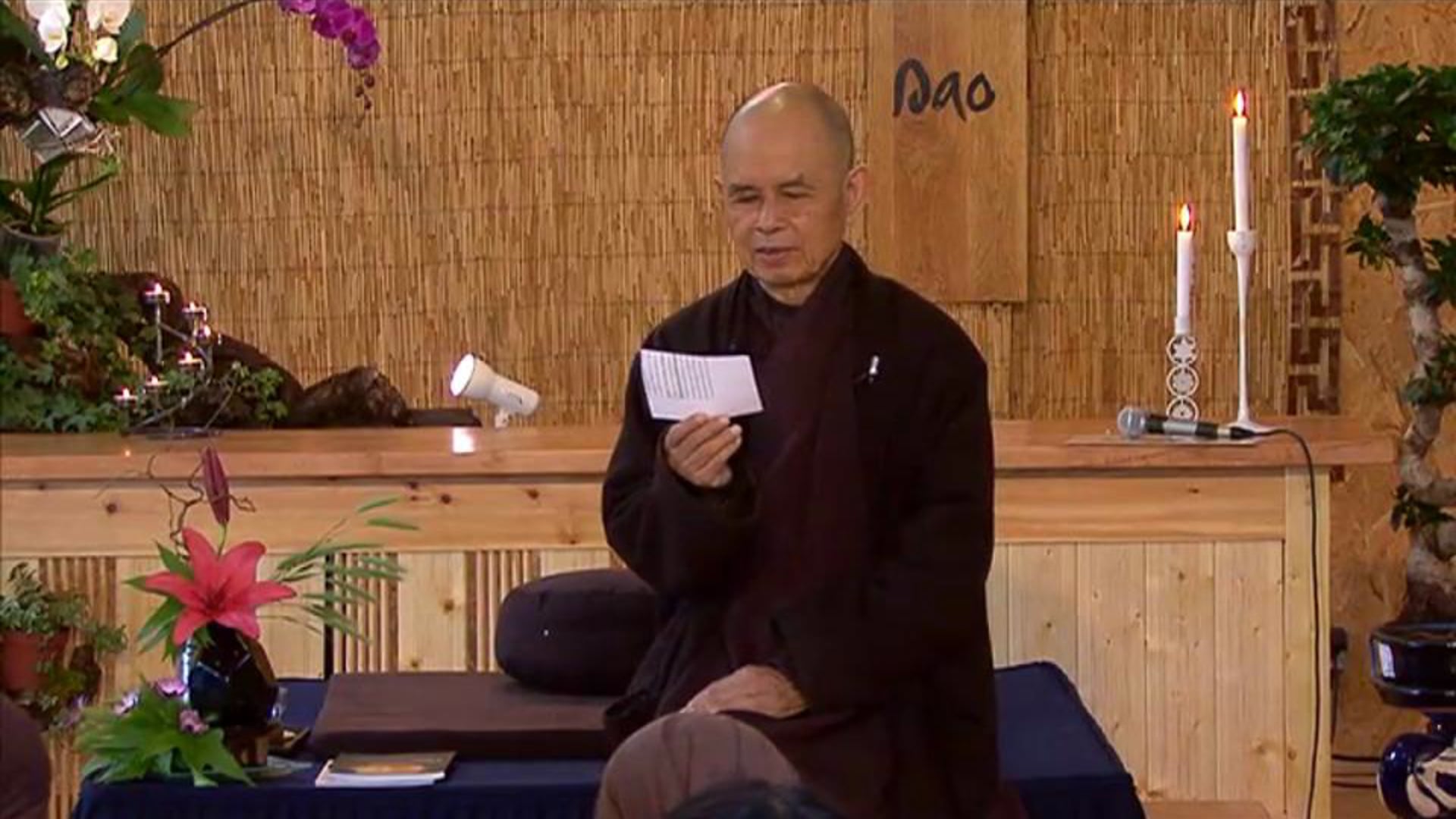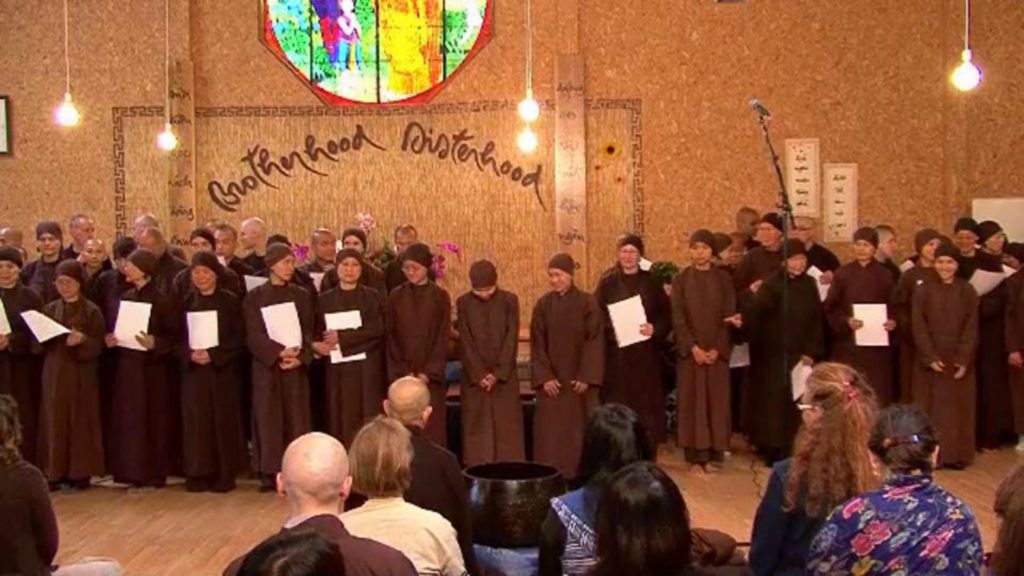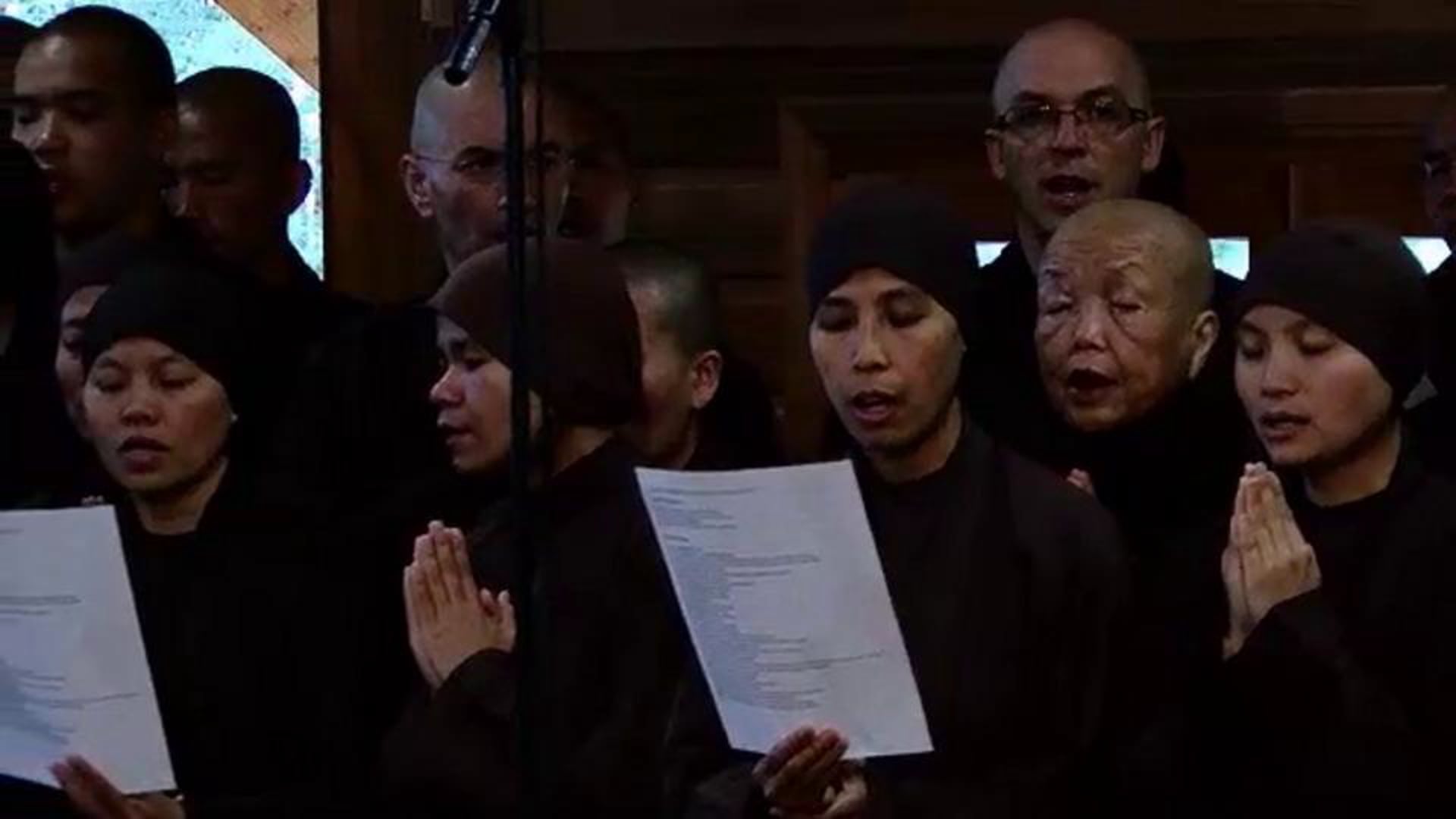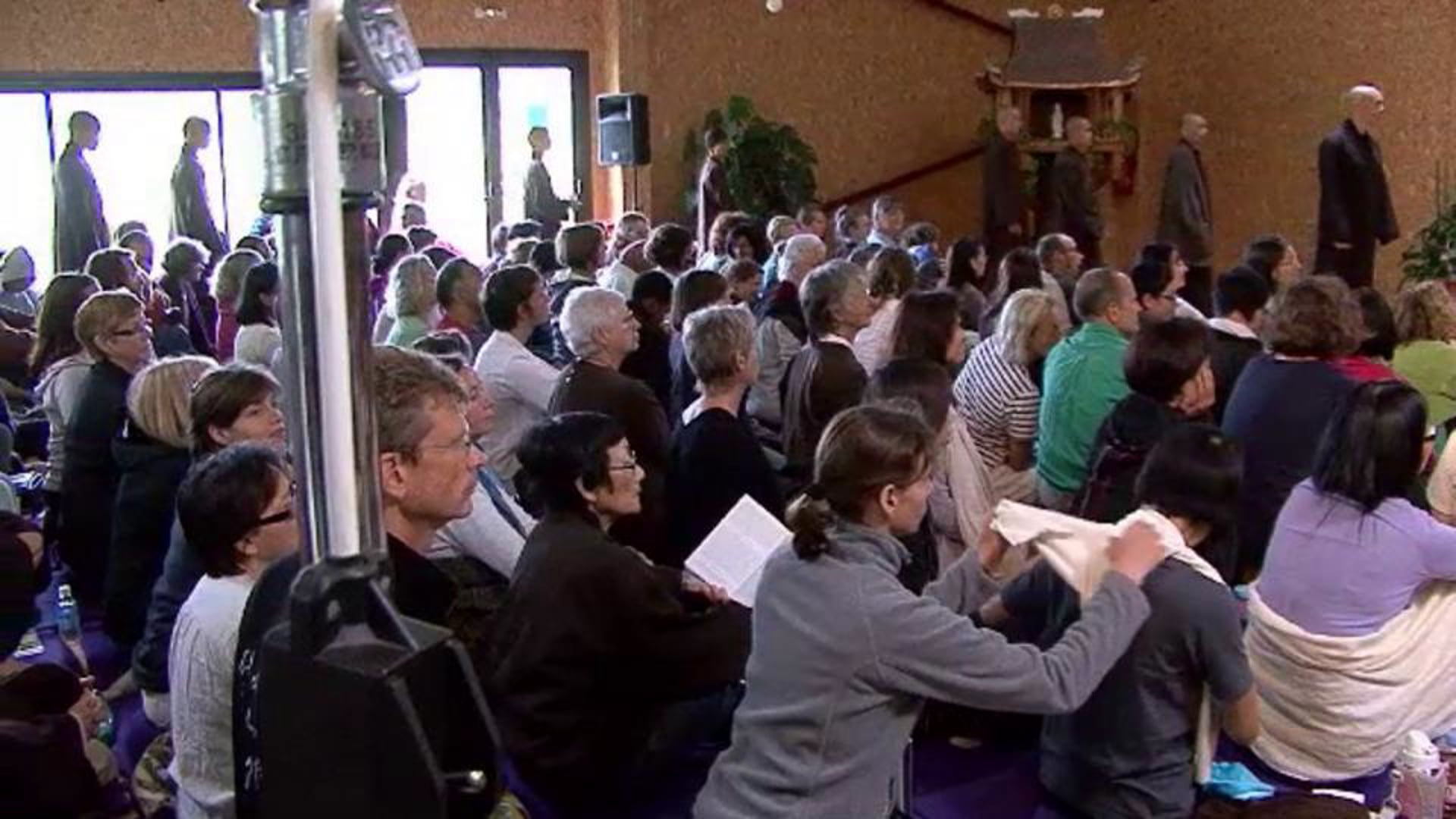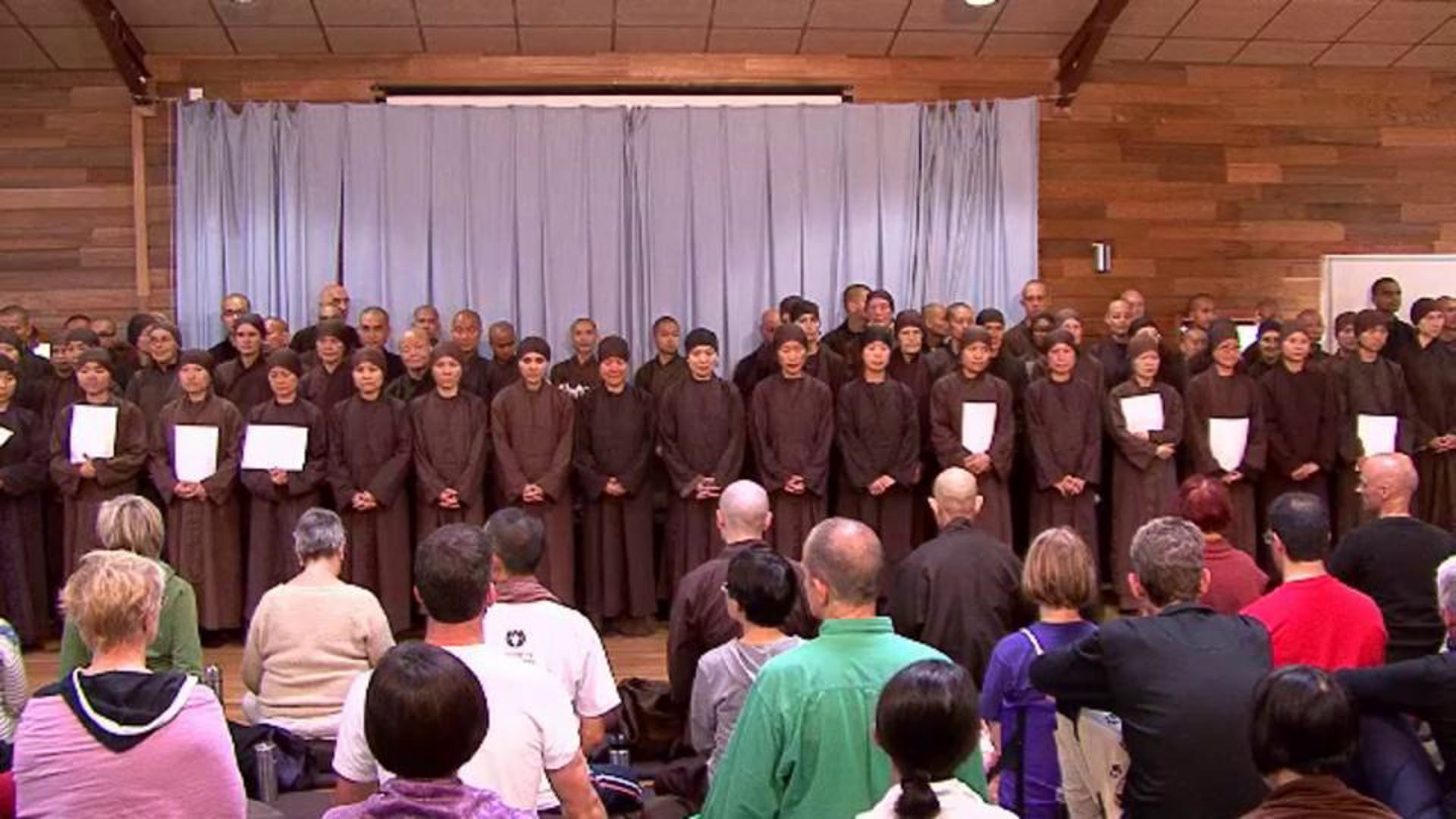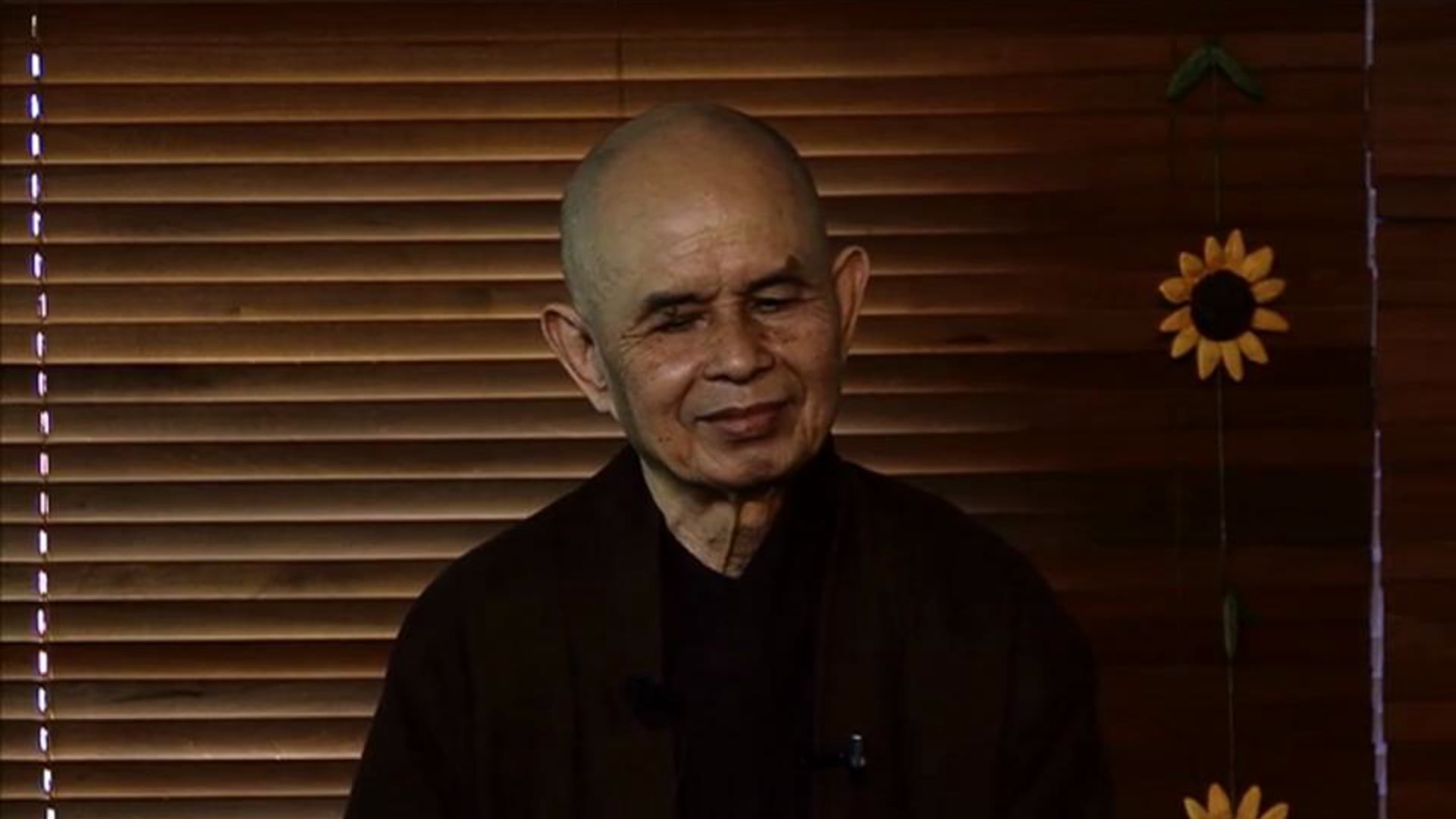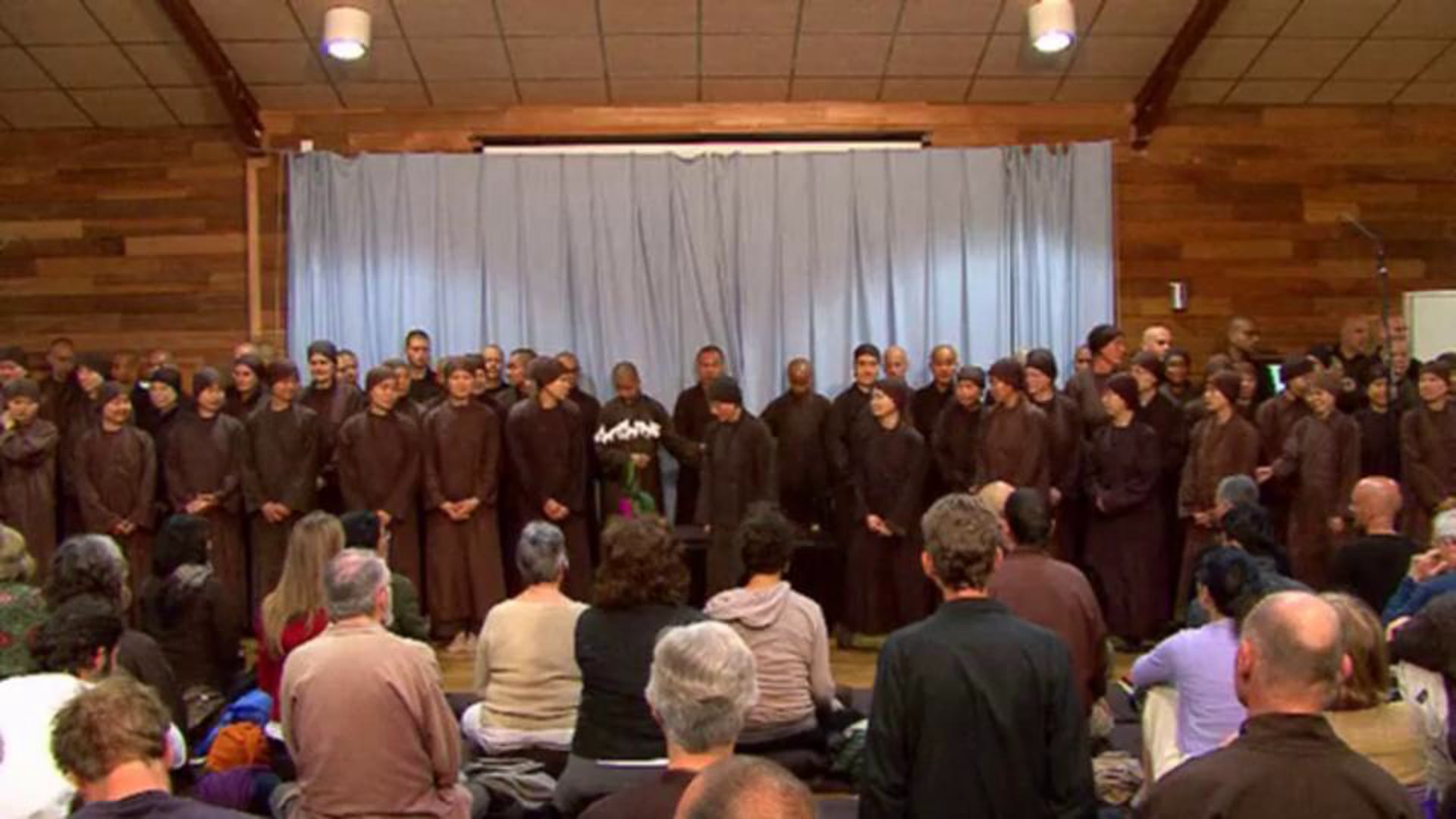This is the seventh Dharma talk of Thay from the Science of the Buddha Retreat, offered in the Lower Hamlet of Plum Village on Sunday, June 10th, 2012.
3:45 Contemplation before chanting
4:20 Les Vision Profond (french)
6:50 hien tien thanh tinh (we are truly present)
12:00 Beginning of the Dharma Talk
16:00 many people has money but they are not happy
17:40 how to generate compassion
18:40 those who has the energy of mindfulness are afraid to go home to embrace their suffering, the act of breathing, sitting, walking, cooking in mindfulness is essential
19:40 Suffering (ill-being) in chinese mean bitterness khu (), there is a vegetables called bitter mellon, but it taste very delicious
22:00 happiness () sukkha, we translate into well-being in the basic teaching of the buddha ill-being is the first noble truth and well being is the third noble truth
23:40 The second noble truth is the making of suffering, the path leading to suffering, and the fourth is the path leading to well-being (), this is the right view
26:35 You cannot define God in term of being and non being
29:10 Understanding suffering always bring compassion
30:25 That is why the lotus is made of mud, the happiness is made of suffering, without suffering you cannot make happiness, can you imagine a place without suffering how can you generate compassion? happiness is born from understanding and compassion, first of all understanding of suffering, when you love someone you have to understand his or her suffering, the foundation of love is understanding. If you really want to love him or her, you have to use your mindfulness to look deeply his suffering, this is the act of love, suffering is the ingredient that is essential for generating understanding and loe
34:32 Darling do you think that I understand you enough?
35:20 You can be a good lover
37:30 Going home to understand the making of our own suffering then we can understand others suffering, love is a kind of energy that help other people to suffer less and taste happiness, the kingdom of God is a place where people can make good use of their suffering in order to create happiness, when happiness disintegrate into suffering again then he or she knows how to create happiness again
40:20 happiness and suffering have an organic nature
41:00 We need happy people in this world
42:00 the fourth mindfulness training, loving speech and compassionate listening
43:00 the practice of breathing, walking in mindfulness help us to touch and recognize our own suffering
51:00 When you use loving speech, others people heart will open, you can heal yourself and other person if you know how to listen deeply, the bodhisattva of deep listening is in your heart, not on the sky
53:08 There is action but there is no actor, according to decorates “I think therefore I’m”, the thinking is there but you cannot find the thinker, the feeling is there but you cannot find the feeler
55:20 Like an orchestra without conductor, like a bee hive they are working together, the queen bee is not the boss, there is no boss there, looking into our body also the same, there is no proprietor, there is no receiver of the action
56:29 Page 14 in the manual book, the fourth paragraph, “Monks when eyes arises, there is no place from where it comes, when it ceases, there is no place to which it goes
01:00:11: the teaching of non locality
01:01:16 own being (svabhava), self nature, nothing has separate existence, any substance is empty of self being or own being, it is the result of some action (energy), there is no actor at all, there is action but no action
01:04:40 There is breathing but there is no breather, breathing is enough
01:07:00 the king kings
01:14:10 is not the eyes who sees, because the eyes is only condition among many condition for the sigh to be possible, the eyes is not the seer, we know behind the eyes has nerves and brain, all of them are condition, so the eyes is not the subject, the eyes is only one condition that made seeing is possible, condition of seeing is both inside of us and outside of
01:19:38 the flower meditation
01:29:20 Ratnaprabhuta Buddh
